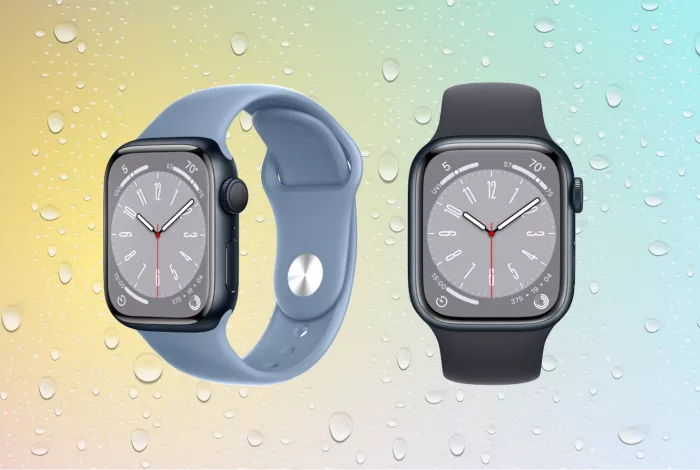Apple Watches are popular fitness companions, helping users track workouts, set goals, and stay motivated. But before taking your watch for a swim or wearing it in the rain, it’s important to understand its water resistance capabilities.
Waterproof vs. Water-Resistant: Key Differences
While many assume Apple Watches are waterproof, they are actually water-resistant—meaning they can handle water exposure under specific conditions but are not invulnerable.
- Waterproof implies complete protection against water in all scenarios (e.g., a sealed glass jar).
- Water-resistant means the device can withstand water exposure within defined limits (e.g., a rain jacket that may fail in heavy downpours).
Apple Watches are designed to resist water up to certain depths and pressures, but exceeding these limits can cause damage.
Safe Water Activities for Your Apple Watch
Not all water-related activities are suitable for every Apple Watch model. Here’s what’s safe—and what to avoid:
Safe Activities
Handwashing or rain exposure: All models can handle splashes from daily use.
Sweaty workouts: Designed to withstand sweat and light moisture.
Swimming (Series 2 and newer): Rated for pool and shallow open-water swimming.
Snorkeling & recreational scuba diving (Ultra models only): Safe up to 40 meters (130 feet).
Activities to Avoid
Showering or bathing: Soap, shampoo, and hot water degrade water resistance over time.
Saunas & steam rooms: High heat and humidity damage seals.
High-pressure water: Avoid jets (hot tubs, pressure washers) or diving from heights.
Deep-sea diving: Only Ultra models are rated for depths up to 40 meters.
Choosing the Right Band for Water Use
Not all Apple Watch bands are water-friendly:
Water-resistant bands: Silicone and fluoroelastomer sports bands are ideal for swimming.
Non-water-resistant bands: Leather, metal, and fabric bands (e.g., Milanese Loop, Leather Link) can degrade when wet.
How Long Can an Apple Watch Stay in Water?
Apple doesn’t specify exact submersion limits, but experts recommend:
- Limit continuous exposure to 30 minutes to preserve water resistance.
- Rinse with fresh water after swimming in saltwater or chlorinated pools.
- Dry thoroughly to prevent moisture buildup.
Protecting Your Watch with Water Lock
Series 2 and newer models include Water Lock, which:
- Prevents accidental screen taps from water droplets.
- Activates automatically during water workouts or manually via Control Center.
Maintaining Water Resistance
To prolong your watch’s water resistance:
- Avoid soaps, lotions, and sunscreen.
- Rinse after swimming and dry with a lint-free cloth.
- Don’t press buttons underwater.
- Regularly check for cracks or seal damage.
Common Myths Debunked
Myth: Apple Watches are waterproof.
Fact: They’re water-resistant with specific limits.
Myth: Water resistance lasts forever.
Fact: It degrades over time due to wear and exposure.
Myth: All bands are swim-proof.
Fact: Only sports bands are designed for water use.
Warranty and Water Damage
Important: Apple’s warranty does not cover water damage, even for water-resistant models. If your watch is damaged:
- Remove it from water immediately.
- Dry it thoroughly before charging.
- Contact Apple Support if issues persist (e.g., foggy screen, muffled sound).
Final Advice
Your Apple Watch is built for water activities—within limits. By following these guidelines, you can safely enjoy swimming, workouts, and more without risking damage.
FAQs
Can I swim with my Apple Watch: Series 2 and newer are safe for swimming; Ultra models support snorkeling and shallow scuba diving. Original and Series 1 are only splash-resistant.
How long can it stay submerged: No official limit, but keeping it under 30 minutes is recommended.
Is showering safe: No. Soap and hot water degrade seals over time.
What are signs of water damage: Condensation under the screen, unresponsive touch, muffled speakers, or overheating.
What if my watch gets water-damaged: Dry it completely before charging. If problems persist, contact Apple Support.
By understanding these details, you can maximize your Apple Watch’s lifespan while staying active in water safely.


